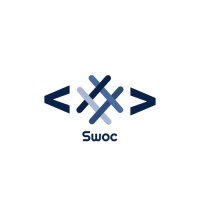Website for Deep Learning Simplified Repo: Click Here!🎯
Deep learning is a subset of machine learning, which is essentially a neural network with three or more layers. These neural networks attempt to simulate the behavior of the human brain—albeit far from matching its ability—allowing it to “learn” from large amounts of data. Deep learning allows computational models that are composed of multiple processing layers to learn representations of data with multiple levels of abstraction. The concept of deep learning is not new. It has been around for a couple of years now. It’s in hype nowadays because earlier we did not have that much processing power and a lot of data. As in the last 20 years, the processing power increased exponentially, deep learning and machine learning came into the picture.
Deep Learning Simplified is an open-source repository containing beginner to advanced-level deep learning projects for contributors who are willing to start their journey in deep learning.
This repository consists of various machine learning projects, and all of the projects must follow a certain template. I want the contributors to keep this in mind while contributing to this repository.
Dataset - This folder stores the dataset used in this project. If the dataset cannot be uploaded to this folder due to its large size, then put a README.md file inside the Dataset folder and include the link to the collected dataset. That'll work!
Images - This folder is used to store the images generated during the data analysis, data visualization, and data segmentation of the project.
Model - This folder will contain your project file (that is .ipynb file) whether it's for analysis or prediction. In addition to the project file, it should also have a 'README.md' using this template and 'requirements.txt' file that includes all necessary add-ons and libraries for the project.
Please follow the Code of Conduct and Contributing Guidelines while contributing in this project repository.
- Go through the project repository and the README to get an idea about this repository.
- Check out the existing issues present there in the Issues section.
- Comment out in the issue, you wanna work on.
- Wait for the issue to be assigned to you. Once it's assigned to you, start working on it.
- Fork the repository.
- Clone your forked repository using terminal or gitbash. Also you can simply use the web version of GitHub to add your files.
- Make changes to the cloned repository.
- Add, Commit and Push.
- Then on GitHub, in your cloned repository, find the option to make a pull request.
- The project admin will evaluate your PR and provide remarks accordingly. If it satisfies all the criteria, your PR will be merged, and your contributions will be counted.
 SSOC 2022 |
 SSOC 2023 |
 SWOC 2023 |
 CodePeak 2023 |
 SWOC 2024 |
 GSSoC 2024 |
Here are a few articles that will help you get an idea of how to start contributing to open source projects: You can refer to the following articles on the basics of Git and Github.
- Watch this video to get started, if you have no clue about open source
- Forking a Repo
- Cloning a Repo
- How to create a Pull Request
- Getting started with Git and GitHub
1️⃣ Recognized as the "🥇 TOP PROJECT ADMIN" for Social Summer of Code, for the year 2022.
2️⃣ Recognized as the "🥇 TOP PROJECT ADMIN" for Social Winter of Code, for the year 2023.
3️⃣ Recognized as the "🥇 TOP PROJECT ADMIN" for Social Summer of Code, for the year 2023.
Abhishek Sharma |
Thanks to these wonderful people! Contributions of any kind are welcome! 🚀
If you liked working on this project, give it a ⭐ and share this repository.
🎉 🎊 😃 Happy Contributing 😃 🎊 🎉
If you'd like to contact me, you can reach me through my social media handles.
© 2023 Abhishek Sharma









.png)




